The night crickets were still calling. Someone was banging at the door. I heard the word ‘birami’ – an ill person. At least it was beginning to get light. Saraswati, the senior Auxiliary Nurse Midwife, emerged from her bed looking awful. I knew she hadn’t slept and she’d been unwell for a few days. She didn’t complain though. She just started to gather information from the man who had been banging on the door. His daughter-in-law had been in labour for a long time. He was vague about how long. This was women’s stuff.
Saraswati splashed a bit of water on her face, packed the backpack with medical supplies and we set out along the dirt road that contours north from Bhotang. We were treated to amazing views of the Langtang ranges, all glistening with pristine snow, and lush green terraces leading down to the blue snake that was the Indrawati River perhaps 800m below. We were up at about 1800m in Sindhupalchowk district. I was here to mentor two Auxiliary Midwives but I’d last delivered at baby in 1985 so I wondered how much use my presence would be.
After about half an hour our guide led us up a series of steep, uneven stone steps and a muddy path that tacked between terraces recently planted with millet. We followed as far as a two storey house surrounded by luxuriant maize and growing potatoes.
As I took off my shoes, I registered moans and groans coming from a young woman. I was pleased to see she was in a bed inside the house – not in the attached cowshed. (In some parts of Nepal the process of giving birth – and even menstruation – is considered polluting so some women are excluded until the baby is safely delivered.)
Saraswati told all the males to leave while we assessed the situation. Our ‘birami’ had been in labour for two nights. It was her first baby.
The older female relatives were cooking rice and vegetables on an open wood fire in the big communal downstairs room. They were saying “Why isn’t the baby coming out?”
Labours to deliver first babies are often long but in the UK they aren’t usually allowed to go one for more than twelve hours. It takes that long sometimes to stretch the neck of the womb to its full 10cm dilation. A good labour is reckoned to progress at a centimetre an hour.
Saraswati reported that the young woman had another 8.5cm to go. Even if there wasn’t something stopping the baby descending the birth canal, this woman was going to become exhausted.
We discussed evacuation with the family. The father looked very young and bewildered. The older women were happy to follow our advice and started busying themselves with Saraswati reminding them they’d need a change of clothes for the patient, something to wrap the baby in, and some money. The only bus of the day was soon to leave for Melemchi where the nearest birthing centre was located. Several clinicians worked there and they could perform a caesarean section if necessary.
At Sarswati’s suggestion, the women dispatched the father-in-law to tell the bus driver not to leave without them.
Meanwhile we walked the half hour back to Bhotang, stopping from time to time while the mother-to-be squatted down until another labour pain subsided. I could feel Saraswati relaxing, knowing that she was handing on the care of a woman who could prove to have quite a range of serious complications that could so easily turn into disasters for both the mother and child.
Our mum-to-be arrived in Melemchi three hours later without mishap. And with the help from an oxytocin drip, she delivered a healthy daughter late that night.
Astonishingly a great number of young Nepali women deliver their babies at home, without any help or advice from a health professional and they manage without any pain-relief whatsoever. They are a great deal tougher that me!
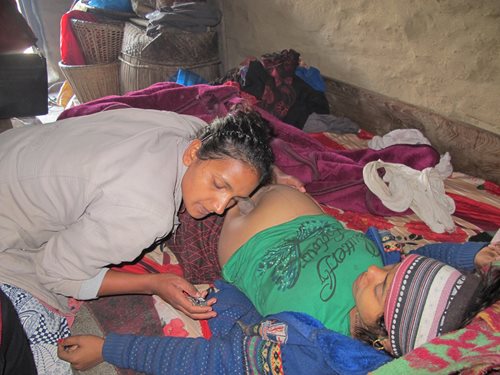 |
| ANM Saraswati checking the progress of a mother-to-be in labour |
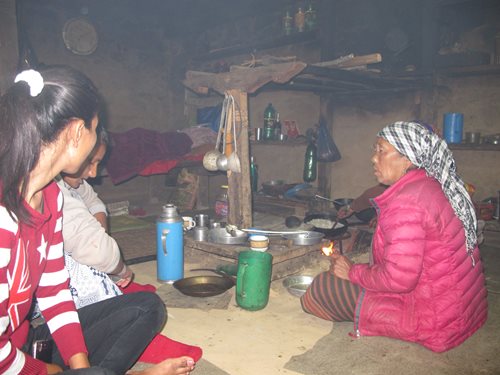 |
| Discussing evacuation; our 'birami' is on the bed beyond the cooking fire |
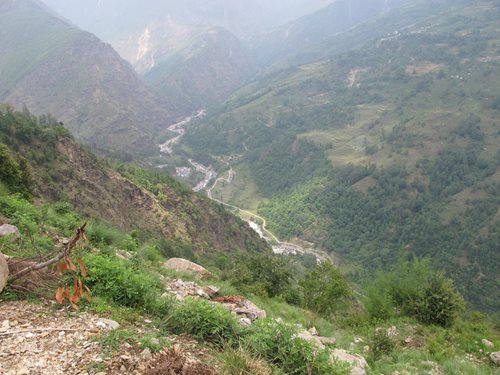 |
| Looking down on the Indrawati River from about 1800m |
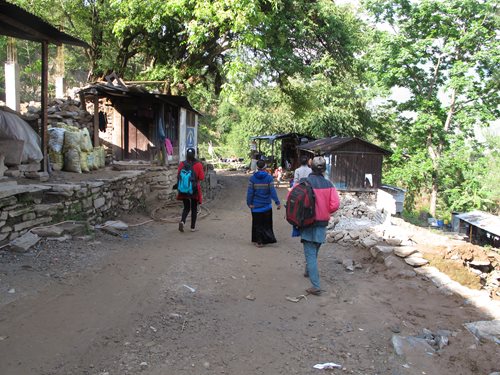 |
| A stately evacuation in the cool of morning - to the bus stop |
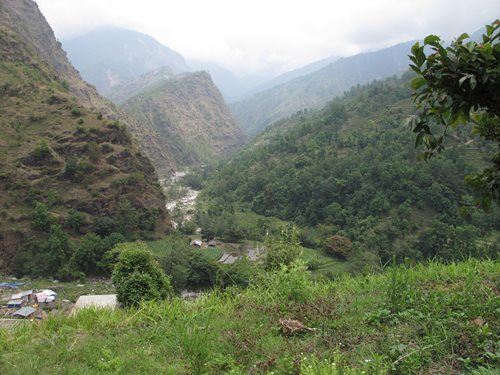 |
| The spectacular broken Indrawati valley |
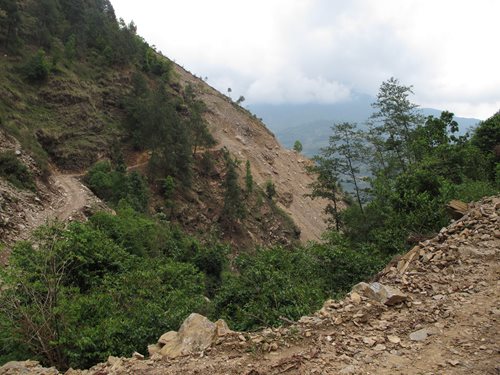 |
| With 'roads' in bad condition and at great risk of landslides |
Read more about my volunteering with PHASE in Nepal but clicking on
Midnight emergency and
Village clinics
Please consider supporting PHASE so they can expand their support of clinicans working in remote mountain communities. They would be delighted to receive donations of any size for this worthy work via
http://www.phaseworldwide.org